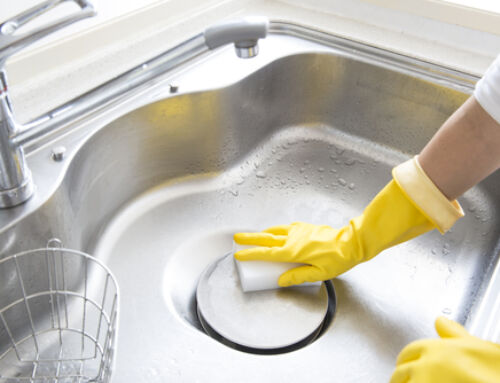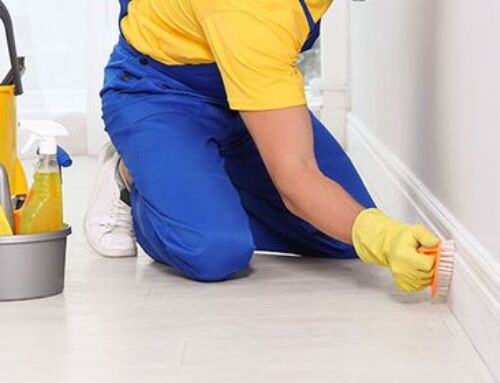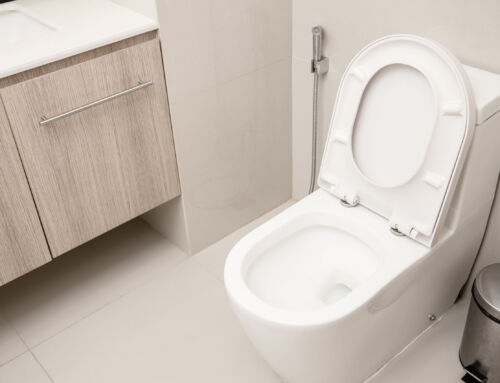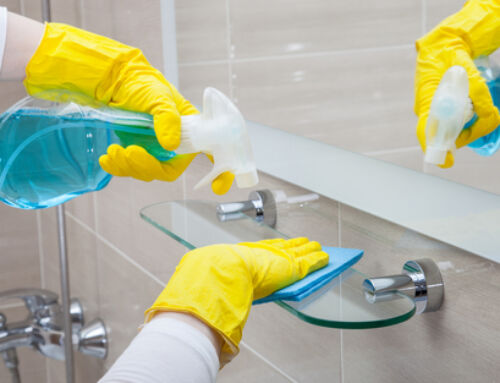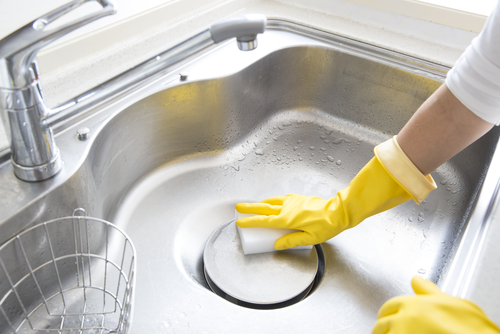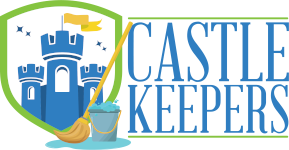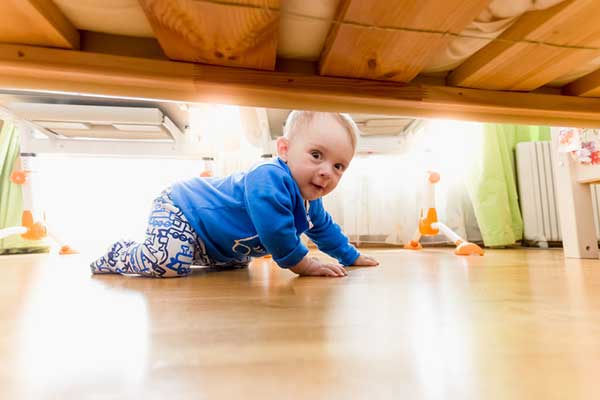
Is My Maid Service Really Green?
- Green cleaning means using products and methods that reduce harm to human health and the environment.
- Third-party certification (e.g., Safer Choice, EcoLogo, Green Seal) verifies safer ingredients and proven cleaning performance.
- True green cleaning is a program: products, equipment, procedures, training, color-coding, and continual improvement—not just swapping chemicals.
What is Green Cleaning?
Green is the color of nature and of a healthy environment. To many people, for the last decade or so when the word “green” is combined with the word “cleaning” it means cleaning that is better for human health and the environment. According to Wikipedia, green cleaning, ” … refers to using cleaning methods and products with environmentally friendly ingredients and procedures which are designed to preserve human health and environmental quality.” The residential cleaning industry employs many people who use cleaning products and are potentially exposed to hazards associated with cleaning product ingredients – not to mention the exposure home occupants receive. From an informed cleaning service’s perspective, it’s more complicated than using lemons, baking soda, vinegar, and salt to clean. Let’s see what green cleaning actually is.
Environmentally Preferable Products
In 1993 President Clinton signed Executive Order 12873 requiring all federal buildings to use environmentally preferable products. This order introduced the term “environmentally preferable,” which means “… products or services that have a lesser or reduced effect on human health and the environment when compared with competing products or services that serve the same purpose.”
ISSA, the Worldwide Cleaning Industry Association, reports that Executive Order 12873 seems simple, but it incorporates three key concepts: the impact on human health; how similar products compare to each other; and the cleaning performance of the products.
Human Health
We clean to protect human health, so the procedures, equipment, and chemicals we use to clean should not adversely affect human health. We need to understand the impact cleaning has on the cleaning technicians, the building occupants, and vulnerable populations such as children, the elderly, and those with suppressed immune systems.
We need to understand the impact cleaning has on the cleaning technicians, the building occupants, and vulnerable populations.
Comparative in Nature
There is not a definite end-all and be-all as to what exactly green cleaning is. Instead, it encourages comparison with competing products, equipment, and services, thus encouraging continuous improvement along with a “green spectrum.”
Cleaning Performance
According to ISSA.com, “… implicit in this definition is the concept that green products and services must perform their intended function of cleaning.” A green cleaning product that doesn’t clean well just wastes the resources it was supposed to save.
Third Party Certifiers
In the late 1990s to 2000s, there were a lot of people, including consumers and maid and cleaning services, clamoring for “environmentally preferable,” or “green” products and services. Based on this increased demand, green certification organizations were introduced and created to make it easier for purchasers to identify green products and source them with confidence. These independent, third-party organizations were built to protect consumers and product end-users, and to help manufacturers and distributors scientifically verify whether a green cleaning product has reduced impact on the environment compared to similar products.
To earn certification from these third-party organizations, these products, which are submitted voluntarily, must meet, among other things, three key criteria:
- The product has been evaluated using science-based environmental leadership standards.
- The product performs as well as or better than other products in its class on accepted standards.
- The product has been independently certified without bias or conflict of interest.
Some extras that may be covered by green certification include:
- Whether the product helps protect indoor air quality and environmental quality
- If the product is manufactured using recycled content, as well as being made from renewable, sustainable resources
- Whether the product contains chlorofluorocarbons (CFCs) or other ozone-depleting substances
- If the product is recyclable and biodegradable
Here are three third-party certifiers recognized in North America. All are voluntary. All help consumers and commercial buyers identify products with safer chemical ingredients without sacrificing quality or performance.
Safer Choice
Formerly known as the U.S. EPA’s Design for the Environment (DfE), the Safer Choice program allows the use of its logo on products that are made of safer chemicals. A Safer Choice logo on a product means that the Safer Choice scientific review team has screened each ingredient for potential human health and environmental effects and that the product contains only those ingredients that pose the least concern among chemicals in their class.
Canada’s EcoLogo Program
The Canadian EcoLogo (also known as Environmental Choice) helps identify products and services that have been independently certified to meet strict environmental standards that reflect their entire life cycle, from manufacturing to disposal. EcoLogo standards are designed so that only the top 20% of products available on the market can achieve certification. Environmental Choice products, services, and packaging are certified for reduced environmental impact. The certifications are voluntary and indicate a product has undergone rigorous scientific testing, exhaustive auditing, or both to prove its compliance with stringent third-party environmental performance standards.
Green Seal
Established in 1989, Green Seal is an independent, non-profit organization dedicated to safeguarding the environment and transforming the marketplace by promoting the manufacture, purchase, and use of environmentally responsible products and services. Its mission is to use science-based programs to empower consumers, purchasers, and companies to create a more sustainable world. Green Seal sets leadership standards that aim to reduce (to the extent technologically and economically feasible) the environmental, health, and social impacts throughout the lifecycle of products, services, and companies. Green Seal Certification is a voluntary process that ensures a product meets rigorous health and environmental criteria, which can be found in the Green Seal Standard for each product category. Achieving certification helps manufacturers back up their environmental claims and helps purchasers identify products that are proven to be safer for human health and the environment.
Green Cleaning is More than Using Green Chemicals
Choosing green cleaning chemicals for a maid or cleaning service is important, but having a green cleaning program is often underestimated and undervalued. Using green chemicals is only the tip of the iceberg. Green cleaning is an approach to the process of cleaning that protects the safety and health of the maid service workers and the occupants of the home while minimizing the impact on the environment. The implementation of a “green cleaning program” involves more than just swapping out a few traditional products for green cleaners. It involves several key steps, including a selection of the right products and equipment, adjusting cleaning procedures, training employees, implementing a communications plan and continually gathering feedback, and making improvements based on that feedback.
The implementation of a “green cleaning program” involves more than just swapping out a few traditional products for green cleaners.
Reusable Products
For instance, using reusable products, as opposed to disposable products, is a key component. A microfiber flat mop is a great example of a product that cleans better than the cotton loop or sponge mops. A microfiber flat mop lasts longer and is easily laundered to prevent cross-contamination. Microfiber (preferably ultra-fine, high-quality microfiber) cleaning cloths and mops work well for removing organic matter (dirt, oils, grease) as well as germs. When used for cleaning, they are split many times to increase their absorbing capacity. Microfiber that catches slightly on the surface of your hand is better quality.
Color-coding
Along those lines, products that can be color-coded to prevent cross-contamination between bathrooms and the rest of the house (like microfiber flat mops and cleaning towels) are also considered green because they protect health.
Choosing Green Equipment
Equipment choice is also key. For vacuums, The Carpet and Rug Institute has a Green Label program that certifies residential vacuums that operate at a sound level of fewer than 70 decibels, successfully removes microscopic dust particles (HEPA or high filtration filters), and do not damage the carpet.
Choosing Green Paper Products
All cleaning chemicals should be rated as environmentally preferable products, as should any paper products supplied by the cleaning service. In addition, the residential cleaning service should purchase plastic trash can liners that contain a minimum of 10% post-consumer recycled content as a way to ensure that any purchases made on a regular basis are truly green.
Getting Serious About Green Cleaning
For consumers who are interested in cleaning companies that are serious about green cleaning, and for cleaning companies that want to set themselves apart in the marketplace, here are two certifying groups with programs to consider working towards:
Cleaning Industry Management Standard (CIMS)
CIMS is designed to assist cleaning organizations in setting up a management system that allows an organization to meet green cleaning goals. The standard should be thought of as a management framework that can be used to develop quality customer-centered organizations. Compliance with the standard demonstrates an organization is structured to deliver consistent, excellent services that are designed to meet the customer’s needs and expectations and includes these areas of management best practices:
- Quality Systems
- Service Delivery
- Human Resources
- Health, Safety, and Environmental Stewardship
- Management Commitment
- Green Building
Green Seal Standard for Residential Cleaning Companies (GS-49)
This standard establishes criteria for cleaning services of residential facilities, areas, or spaces. Specialized services, such as mold remediation, restorative carpet, and upholstery cleaning, and cleaning of commercial or institutional buildings are not included in this standard. Written guidelines include elements such as:
- Environmentally preferable cleaning tools, supplies, equipment, and products, plus inspection and maintenance thereof
- Identification and cleaning procedures for areas that require disinfection or sanitizing
- Identification and cleaning procedures for areas requiring special cleaning (e.g., entryways, nurseries, etc.)
- Vulnerable population management
- Accident management and safety procedures in compliance with OSHA and state regulations
- Chemical storage, handling, use, and disposal
- Waste reduction, handling, use, and disposal
- Water conservation and use policy
- Service quality standards (especially for cleaning efficiency) and quality control
- Training requirements for staff
- Communication policies for staff and clients
- Professionalism and code of conduct of staff.
These programs ask cleaning services to put thought into environmental and green cleaning policies, in addition to communications and quality plans. They set forth frameworks for effective operations and continual improvement, plus feedback loops, and to effectively produce and deliver customer-centric services. Good management practices, hiring practices, and training are also included, as are health, safety, and environmental stewardship of staff and clients.
Homeowners should be especially careful in interpreting vague or generic claims.
When choosing a cleaning service, the best overall value considers performance, price, availability, regulatory requirements, and environmental impact. Homeowners should be especially careful in interpreting vague or generic claims such as “environmentally friendly,” “green,” or “natural.” They should ask maid services to clearly and specifically define their green claims. Only then can homeowners decide about the overall best value, taking into account their priorities.
Sources:
Cristen Conger “How green is green household cleaners?” 14 July 2008.
HowStuffWorks.com. 2 June 2018
Robert Kravitz “Green Cleaning’s Roots” Cleanlink.com 1 June 2006. 2 June 2018
Executive Order 13101 of September 16, 1998 – Greening the Government Through Waste Prevention, Recycling, and Federal Acquisition
Executive Order 12873 of October 20, 1993 – Federal Acquisition, Recycling, and Waste Prevention
Stephen Ashkin “Green Cleaning: The Journey from Niche to Mainstream” 7 March 2014 4 June 2018
U.S. Department of Health and Human Services Household Products Database
Agency for Toxic Substances and Diseases Registry
Additional Resources:
- How Do I Know if a Cleaning Company is Good?
- Should I Hire a Cleaning Company?
- How Often Should I Clean That?
- How Much does Maid Service Cost?
- Do Good Cleaning Companies Get Bad Reviews?
- How to Guard Against Theft by Your Maid Service or Cleaning Company
- Our Green Cleaning Policy
- Our Environmental Policy
- More information about us.
About Castle Keepers House Cleaning

LET US DO THE CLEANING. YOU DO THE RELAXING.
Share this article
A quick overview of the topics covered in this article.


